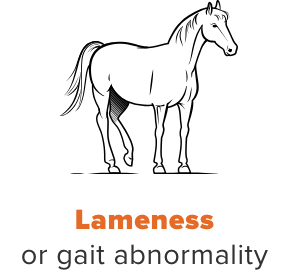DON'T STALL if you see these signs, it could be EPM.
Stall rest won't help these neurological signs — and it could be equine protozoal myeloencephalitis (EPM). The earlier the diagnosis and treatment begins, the better your clients horse's chances for recovery.





Vet FAQs
by Sarah Reuss, VMD, DACVIM
- Reed SM, Furr M, Howe DK, et. al., Equine Protozoal Myeloencephalitis: An Updated Consensus Statement with a Focus on Parasite Biology, Diagnosis, Treatment, and Prevention. J Vet Intern Med 2016;30:491–502.
- Reed SM, Furr M, Howe DK, et. al., Equine Protozoal Myeloencephalitis: An Updated Consensus Statement with a Focus on Parasite Biology, Diagnosis, Treatment, and Prevention. J Vet Intern Med 2016;30:491–502.
- Reed SM, Neurology Is Not a Euphemism for Necropsy:A Review of Selected Neurological Diseases Affecting Horses. AAEP Proceedings MILNE Lecture, Vol. 54 2008;78-109.
There are three different FDA approved drugs currently available to treat EPM, Marquis (15% w/w ponazuril) Antiprotozal Oral Paste, Boehringer Ingelheim Animal Health USA Inc., Duluth, GA, Protazil® (1.56% diclazuril), Merck Animal Health, Madison, NJ, and ReBalance® (sulfadiazine/pyrimethamine Oral Suspension), PRN Pharmacal, Pensacola, FL. There are multiple non-FDA approved drugs which have not been through the same safety and efficacy studies as the three listed above. Ancillary treatment with anti-inflammatories, immune modulators, and supportive care may also be recommended.
